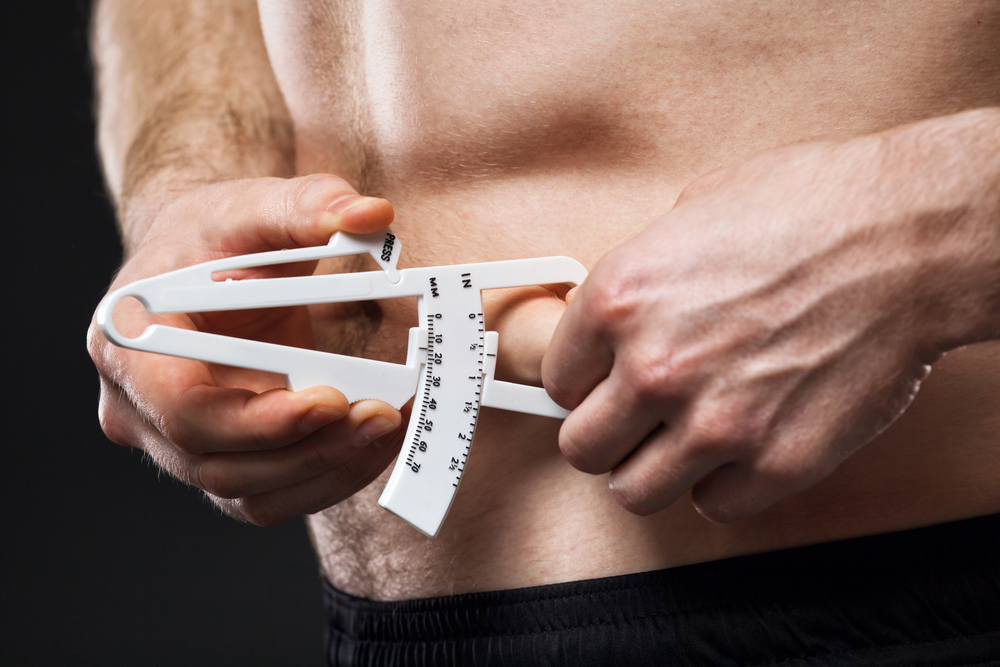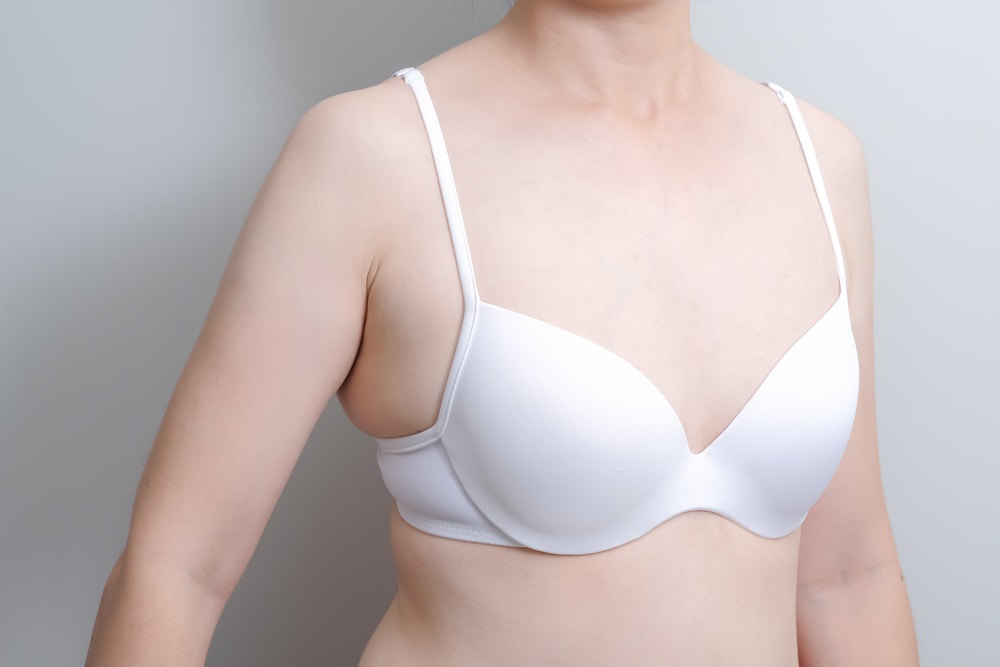Four top plastic surgeons lay down the skinny on this most popular of plastic surgery procedures.
The popularity of cosmetic surgery among men is at an all-time high. In fact, for over a decade the number of guys getting cosmetic work done has consistently increased by approximately 10 per cent each year. With liposuction being the most common treatment men are getting these days, we decided to ask four surgeons with extensive body contouring experience a few questions about it.
These are the plastic surgeons we spoke with, and this is what they had to tell us.

Dr. John J. Corey has held a practice in the Scottsdale, Arizona, area for over 20 years. He lectures at Arizona State University and previously acted as the chief of plastic surgery at Phoenix’s Good Samaritan Regional Medical Center.
Dr. Thomas Sterry is a board-certified New York City plastic surgeon with over ten years experience. He has boutique-style practice in Manhattan and says he focuses on each patient’s unique needs and aesthetic goals so he can provide the most attractive and natural-looking outcomes possible.
Dr. Shim Ching is a board-certified plastic surgeon based in Honolulu who incorporates technological innovation, exceptional surgical skill and artistic talent in his practice. Dr. Ching was recently honored as one of the Best Doctors in America. The Best Doctors in America® list includes the nation’s most respected specialists and outstanding primary care physicians.
Dr. Marc DuPéré is one of the top plastic surgeons in Toronto, Canada. He became a Fellow of the Royal College of Physicians and Surgeons of Canada in 2001, specializing in Reconstructive, Aesthetic and Plastic Surgery. He subsequently did a traveling fellowship in Paris, Los Angeles and New York City where he perfected his techniques in aesthetic facial, breast and body surgeries.
What is the increase in popularity of plastic surgery for men caused by?
Have you personally noticed an increase in men seeking liposuction over the past several years? And if so, do you have any theories as to why this is happening?
Dr. Shim Chin: Yes, men are seeking more cosmetic procedures in general, although liposuction is the most common reason I see men in my office. I think society in general is more open to plastic surgery and this has lead to more men seeking surgery to look better.
Dr. Marc DuPéré: Definitively! My practice in Toronto is now comprised of 18-19% males compared to the 8-9% it was in the early 2000s. Hetero, metro and gay men are all considering procedures to better themselves now. Men are much more self-conscious today. Grooming is up, including skincare for men. But it’s the competitive workplace, higher divorce rates, internet, male celebrities getting plastic surgery, etc. – these are all incentives for men to look for procedures to help them look fresher and feel more attractive.
Dr. Tom Sterry: Yes. I think some men, especially gay men, feel more pressure to look good these days. The beer belly is not okay anymore. They want me to carve out the abs they can’t seem to get at the gym.
How do men and women’s attitudes with regards to plastic surgery differ?
Do you find that men have different expectations from liposuction – or any cosmetic surgery procedure for that matter – than women?
Dr. Shim Chin: In my practice I find men have similar expectations as women from liposuction. But men are often more direct in their approach to surgery. Generally, when they come in for a consultation they go on to have the procedure soon after.
Dr. Marc DuPéré: Yes, there are differences. Men don’t tend to seek perfection as much but still want to look better. Men want to recover faster. Men want more secrecy about their procedures than females; most females will discuss their procedures with people who are close to them whereas males often keep it completely secret. Men like simple instructions.
On the flip side, women deal better with post-op pain, are better at preparing for their surgeries, and will closely follow the post-op instructions. Men aren’t as good with that.
Dr. Tom Sterry: Regardless of gender, everybody wants their results yesterday and think this is a reality TV show where you see outcomes in 30 minutes. That said, I find men are much more secretive than women when it comes to cosmetic procedures.
In fact, that’s a major problem for us… women will lunch with their friends and talk about their procedures. Whereas men NEVER fess up that they’ve had anything done, so with my male patients I can’t grow my business through word of mouth.
Dr. John Corey: Most of my male patients want to fit and feel better in their clothing. They may want to wear T-shirts or polo shirts and have them fit just a bit more slim.
Women will lunch with their friends and talk about their procedures, whereas men NEVER fess up that they’ve had anything done.
Dr. Tom Steery
What are the ages of the men coming to see you for liposuction?
Are they mostly middle-aged or older, or is there truth to reports of a daddy-makeover trend among men in their thirties?
Dr. Shim Chin: We treat men of all ages, from younger men to older men. And the most common areas they all want treated are the abdomen and flanks, regardless of age.
Dr. Marc DuPéré: I get requests for liposuction from males of all ages, from 20 to 84! I’m not joking. I recently treated this 84 year-old, healthy grandfather who had met a younger lady and wanted to look his best for her, but the average age is really men in their mid-thirties to mid-fifties. They all ask to reduce their lower back rolls, love handles and abdomen, but the younger crows also tend to ask for chest liposuction – and gynecomastia surgery – as well as abdominal etching.
Dr. Tom Sterry: Men aged 30-50 are the most common. Abdomen/flanks or neck. Never arms or thighs. Never.
What areas of the body can be treated through liposuction?
What are the most common liposuction procedures men tend to seek, and for which parts of the body? Is it mainly used on the midsection?
Dr. Marc DuPéré: In this order; Love handles. Abdomen. Lower back rolls. Chest and chest rolls. Neck and double chin.
Dr. Tom Sterry: Patients typically come in asking for “belly liposuction”, but end up getting treatments for their love handles, aka flanks, as well. It’s sort of the peanut butter and jelly sandwich of liposuction. Other areas for men are the neck – we do a fair number of those.
Dr. John Corey: The most common areas men ask me for is the “spare tire” area of the abdomen and their love handles. Second most common is the neck/chin area and third is the chest.
How effective is liposuction when performed on the chin and neck?
Is liposuction a pragmatic option to help guys reduce double chins? Might there be a better cosmetic procedure to achieve the same result?
Dr. Shim Chin: Liposuction is a good option to reduce fat in the neck region. Sometimes, a full neck may be due to excess muscle or glandular tissue. Deeper fat that cannot be removed by liposuction could also be present. In these cases, a necklift approach is used to remove these other factors that can cause a double chin.
Recently, an injectable product has come out called Kybella which can also reduce fat in the neck region. This is a non-surgical option that can work very well. Finally, CoolSculpting can also be used to reduce fat in the neck area.
Dr. Marc DuPéré: Liposuction to the neck is the gold standard to remove a double chin for a male with taut skin. With older males, as with women, the plastic surgeon might also have to open a small 2cm under the chin to fix the loose bands created by the loose neck muscles (called platysma). When doing so, this is a great opportunity for me as plastic surgeon to add a chin implant – which brings tremendous masculinity and strength to a male face.
Belkyra or Kybella, as it’s known in the USA, is a gentle in-office non-surgical way to dissolve fat residing under the chin. It does produce nice improvements but simply cannot deliver the way surgery can. Liposuction alone and/or muscle neck repair can often be performed under intravenous sedation and local anesthesia for males not interested in a general anesthetics.
Dr. Tom Sterry: There is absolutely nothing nearly as good as liposuction for removing fat under the chin. Nothing! It’s a fabulous procedure that takes 30 minutes to perform and consistently yields good results. Other procedures produce much more subtle results, take a long time, and may need to be repeated – which means the recovery needs to be repeated as well.
Recently, an injectable product has come out called Kybella which can also reduce fat in the neck region. This is a non-surgical option that can work very well.
Dr. Shim Chin
Is liposuction permanent?
I’ve heard that once you’ve had liposuction fat never really returns to that area of the body in the same way. Is there any truth to this?
Dr. Shim Chin: Yes, when fat is removed from an area through liposuction it does not tend to return to that area, unless a large amount of weight is gained.
Dr. Marc DuPéré: Yes, it’s true that liposuction is permanent. There is a finite number of fat cells in our body. Each fat cell acts as storage for whatever fat molecule circulates in the body. If there are less fat cells in one area after liposuction fewer fat cells will accumulate in that region. Except they’ll just accumulate somewhere else instead if the amount of calories you regularly ingest is greater than the number being burned off through daily activities.
Results can last for decades if the patient has a healthy diet and lifestyle, keeping in mind that the body needs to burn off the calories it ingests every day. When this balance is off, one will either gain or lose weight.
Dr. John Corey: There is still a lot of research going into fat, its uses and its physiology. At present we believe that in the majority of cases fat cells act like muscle cells. They get bigger and smaller but don’t change in number. So in theory, once they are removed from an area, more fat cells will not regrow in that same area.
Liposuction before and after pictures
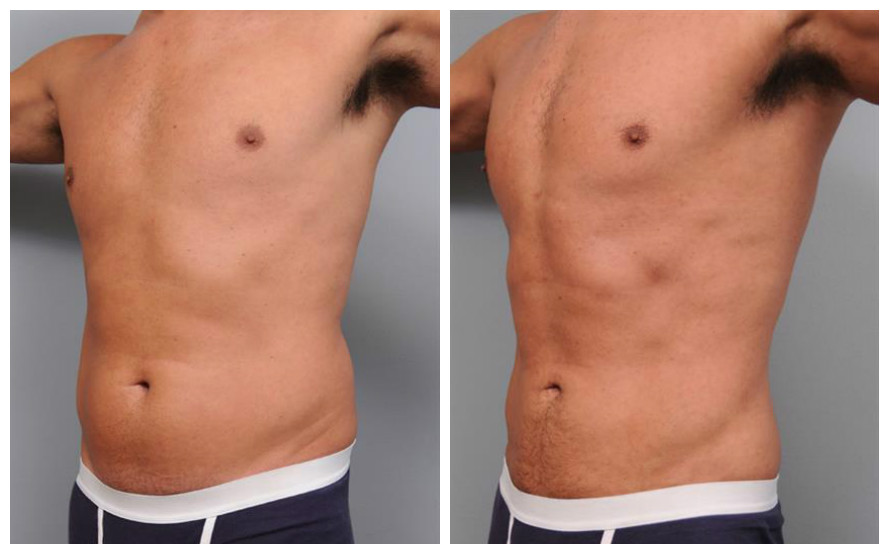
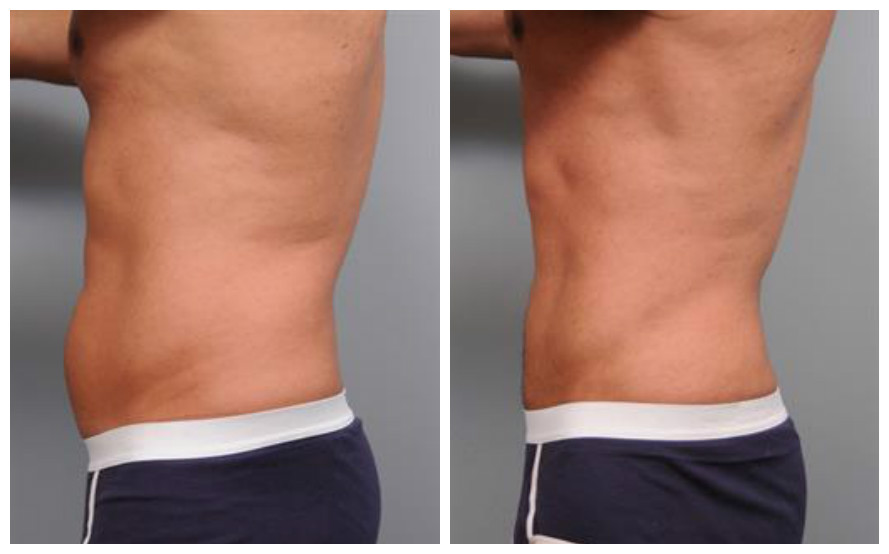
This 36-year-old man was frustrated that nobody could see his abs despite him working out fairly hard. He asked for Smartlipo liposuction to the abdomen and flanks. At the time of his initial procedure he was 6 feet tall and weighed 188.6 pounds on the office scale. Volume removed with lipsuction: 2,200 cc. Recovery: weekend (back to work Monday).
Credits: Dr. Thomas Sterry
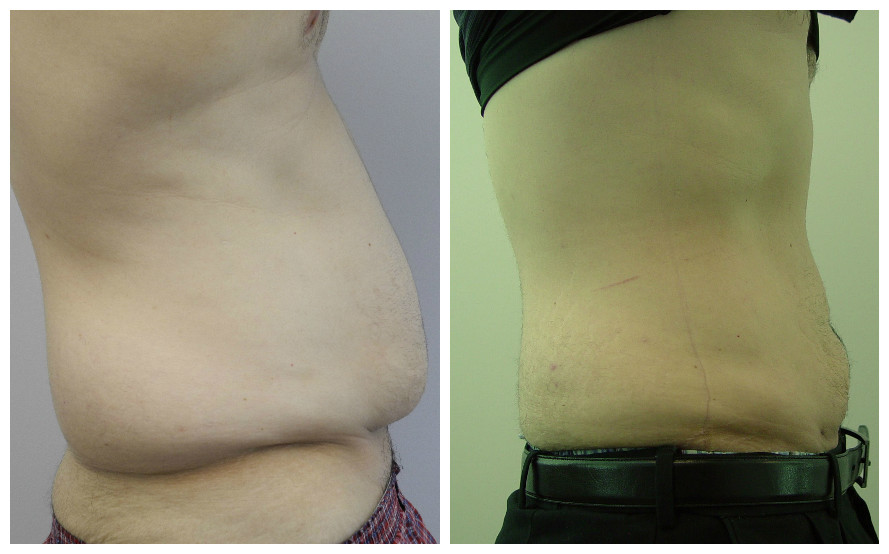
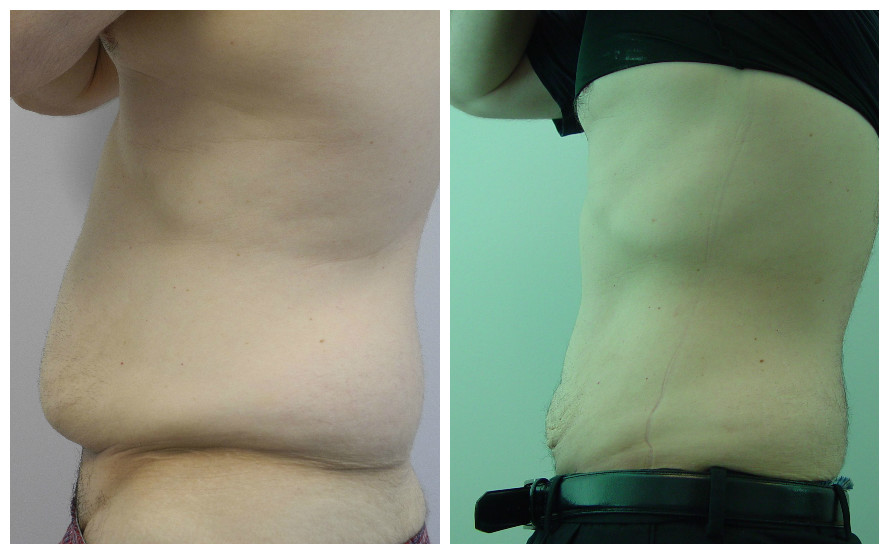
This patient had laser liposuction to get rid of excess abdominal fat. Laser liposuction can be used on most areas of the body including delicate areas such as the face and neck, as well as the thighs, love handles, and waist.
Credits: Dr. Shim Chin
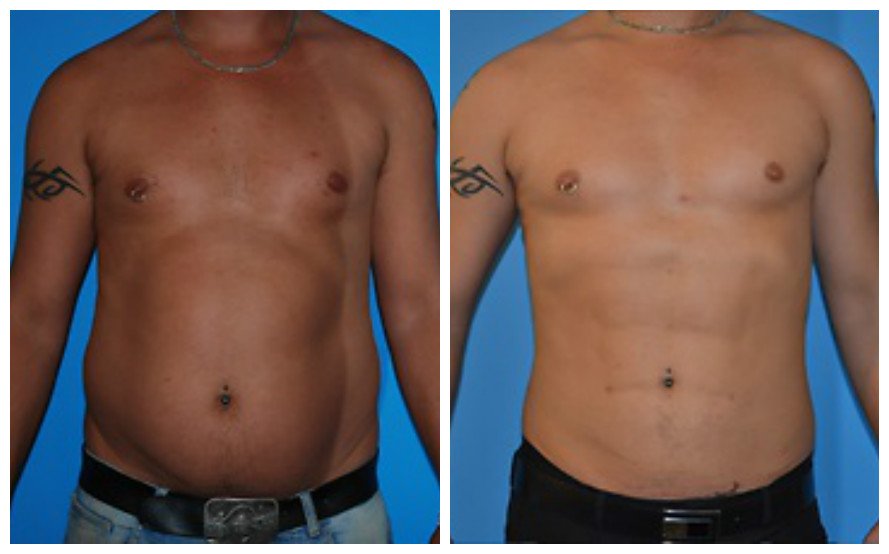

This 33 year-old the patient complained about the love handles at his sides and the excess belly fat on his abdomen, saying it just “creeped up” on him. Liposuction was performed to remove the excess fat found in the love handle and back roll areas. The patient’s abdomen was then sculpted through abdominal etching.
Credits: Dr. Marc Dupéré
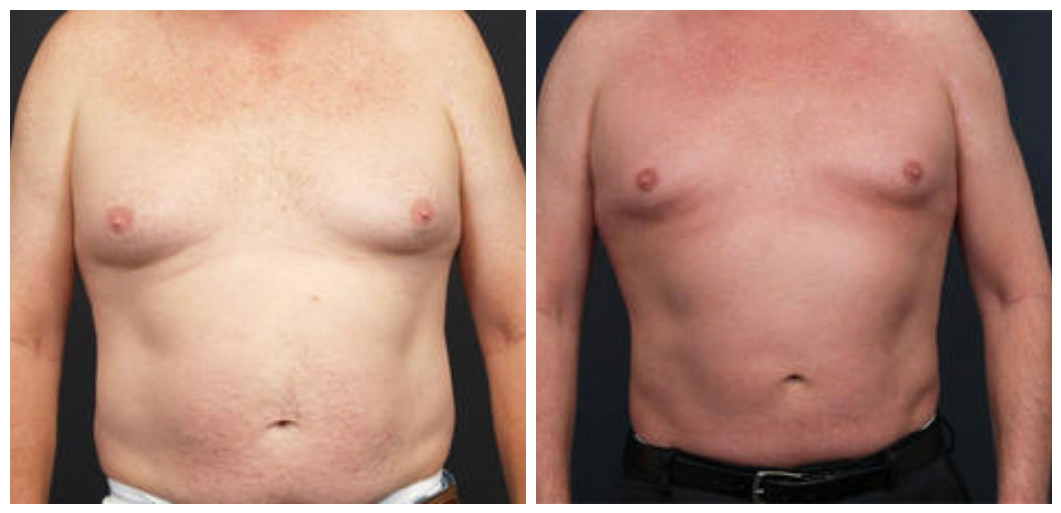
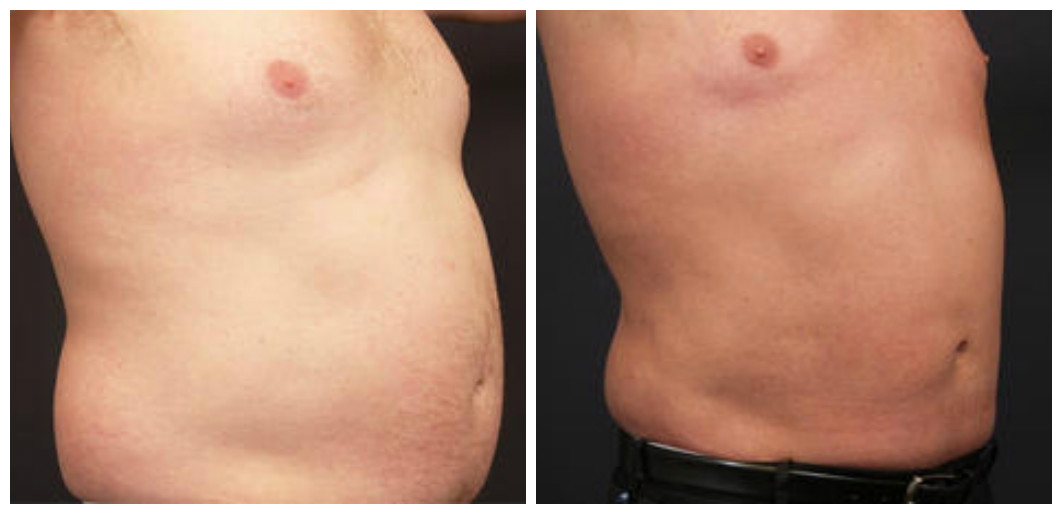
A 52 year-old patient presented with challenging areas of the classic male spare tire and the chest as well. It was decided to treat him with SlimLipo laser–assisted liposuction. 3,000cc were removed.
Credits: Dr. John Corey
Are there any viable alternatives to liposuction for men?
CoolSculpting comes to mind, but are there others, and when/why would you recommend them to patients, if ever?
Dr. Shim Chin: CoolSculpting is the next best option for reducing unwanted fat. There are other devices, but CoolSculpting has proved it’s effectiveness and has the longest safety track record.
Dr. Marc DuPéré: Coolsculpting, SculpSure, and similar procedures will never be as powerful as traditional suction-assisted or power-assisted liposuction. They are also expensive, painful, require many treatments, and the results are only minimal. I find when a patient visits a family doctor or a dermatologist, he might be happy with a small improvement whereas when a patient visits a plastic surgeon, he/she is expecting real results; they are happy to take a few days off for recovery if the results will be shining and obvious.
I personally have not been as impressed by CoolSculpting and the other technologies as I am with my Power-Assisted system PAL, but they might be good for a family doctor or dermatology practice where patients’ expectations aren’t quite as high. But I caution my patients about not paying exorbitant prices for these non-invasive technologies and to be skeptical of the marketing material. I also advise patients to inquire about how many patients eventually converted to traditional liposuction after undergoing one of these less-invasive approaches.
Dr. Tom Sterry: New treatments are being developed every day, but the gold standard remains liposuction in one form or another (tumescent, smartlipo, Vaser). The alternatives like CoolSculpting – and now Vanquish – really do work, but the results are so subtle we hear a lot of complaints about them.
Dr. John Corey: I think these non-invasive techniques are only good when very mild to minimal shaping needs to take place. My rule of thumb is if you can pinch the area you don’t like with your fingers, then some non-invasive techniques might work. But if you can grab it with your hand you probably need liposuction.
If you can pinch the area you don’t like with your fingers, then some non-invasive techniques might work. But if you can grab it with your hand you probably need liposuction.
Dr. John Corey
Isn’t leading a healthy lifestyle the best option for permanent weight loss?
Or in other words, are there instances where diet and exercise simply cannot be as effective as liposuction?
Dr. Shim Chin: In some cases liposuction is the only option, because you cannot exercise to lose fat in certain areas of the body.
Dr. Marc DuPéré: Genetics and age are major factors that play a strong role in our daily basic metabolism. And sometimes long work hours and/or required family time doesn’t allow us to get in enough gym hours to compensate for the amount of calories we ingest on an average day, not to mention the office dinners, obligatory drinks with the buddies, eating hot dogs and knocking back beers at hockey games, etc. Liposuction can be a good way to kick-start a better and healthier lifestyle.
Dr. John Corey: I have seen very lean and fit people come to my office with these areas that just will not go away no matter what they do. We know spot reducing really doesn’t work and in many cases lipo offers a straightforward and quick solution to something that can be impossible for people to do on their own.
What happens during a liposuction treatment?
How does liposuction work exactly? What are the newer technologies and approaches to the procedure?
Dr. Shim Chin: The area to be treated is injected with a fluid to control bleeding and numb the skin. Fat is then suctioned using a narrow metal tube via small incisions placed in the skin.
Dr. Marc DuPéré: First of all, most liposuction procedures involve the infiltration of tumescence solution, which is made of local anesthetics and adrenaline and helps to reduce the amount of blood loss. As for the technologies, all liposuction involves breaking fat cells and aspirating the broken cells. The suction-assisted liposuction (SAL) involves the plastic surgeon to mechanically break up the fat cell with the “back and forth” movement.
The newest technologies have come along mostly to help the surgeons. We have the oscillations, or vibration-assisted liposuction, aka power-assisted liposuction (PAL), which is a favorite with many plastic surgeons for its efficacy and low complication rate, along with various ultrasound-assisted liposuction technologies such as UAL and Vaser.
Can you do multiple liposuction procedures on the same area of the body?
Instead of watching one’s diet and exercising regularly to avoid unsightly weight gain, could a person just keep going back for more liposuction sessions every time the love handles start to grow back again?
Dr. Marc DuPéré: Anytime you return to surgery on any given area one has to always evaluate the risks, so it’s always better to be pro-active and prevent fat accumulation rather than relying on liposuction every 5 years. That being said, yes, it is possible to go back to the same area several times but the more often you go back, there will be significant internal scarring. It then becomes important to have an excellent liposuction system to help break down fat and fibrous/scarring tissue.
Dr. John Corey: In theory it is possible to repeat liposuction in the same area if it keeps getting bigger, but I strongly discourage patients from attempting this and in fact, I almost always turn these cases away.
Dr. Tom Sterry: Not really. When we remove fat cells from an area it’s generally difficult to gain weight in that area again. Unfortunately, however, it’s also not impossible because as I mentioned earlier, we have to leave a little fat behind or else people don’t look normal. So those remaining fat cells can expand and we do sometimes go back to the same space for more suctioning, but it’s not so easy to do the second time around.
A lot of scar tissue develops which makes it physically difficult to perform a “redo”. We also don’t see as much fat develop in the same space proportionate to the rest of the body, so these cases don’t occur all that frequently.
In theory it is possible to repeat liposuction in the same area if it keeps getting bigger, but I strongly discourage patients from attempting this and in fact, I almost always turn these cases away.
Dr. John Corey
What are the side effects to liposuction?
Are there any potential complications one should be aware of before committing to liposuction?
Dr. Shim Chin: Liposuction when done by an experienced board certified plastic surgeon is very safe. Any potential complications are minimal and could likely be corrected with a small revision procedure most plastic surgeons offer their patients to ensure complete satisfaction.
Dr. Marc DuPéré: As with any surgery, there are risks associated with liposuction. Seeking a board-certified plastic surgeon who has 5 years of plastic surgery training after his/her medical training will minimize risks. Such risks include skin surface asymmetry, scarring, internal fibrosis, skin and fat necrosis, fat embolism, deep venous thrombosis, volume overload, blood loss, loss of sensations, and soft tissue damage.
When should liposuction be avoided?
Is there anyone that absolutely should not have liposuction treatments?
Dr. Marc DuPéré: Morbidly obese patients, patient with serious heart conditions such as a recent heart attack or cardiac failure, patients on blood-thinners or coagulopathy, patients with a concomitant infection, patients with severe chronic lymphedema, etc.
Dr. John Corey: Certainly anyone who is not healthy enough to undergo general anesthesia would not be a candidate. Being extremely overweight is a contraindication as well since liposuction is not a weight-loss tool but a body contouring tool. Also, patients with extremely loose skin can have the condition made worse by liposuction.
Does liposuction hurt?
If so, what is done to alleviate the pain?
Dr. Marc DuPéré: There is pain associated with all surgeries and yes, there is pain with liposuction as well. With the exception of the neck, which can be done easily under deep sedation, most body liposuction is done under general anesthesia. During surgery, we use fentanyl for pain management and sometimes morphine and its derivatives. Propofol is also an important anesthetic medication. Inhalant gases can be used in combination. I also like to use ondasetron (Zofran) to minimize post-op nausea.
Intraoperatively, we also use several liters of tumescence solution which contains local anesthesia, which in turn decreases the need for anesthetic medications, and therefore nausea. Post-operatively, I use a combination of Percocet (oxycodone and Tylenol) and sometimes I add ketorolac (toradol), a powerful anti-inflammatory. The ketorolac is also very helpful when I’m performing abdominal etching, which is associated with more discomfort in the first few days following surgery.
Dr. Tom Sterry: Patients complain about feeling sore – really sore! But they all go back to work in 3 days or so – all except for 2 patients in 15 years of practicing. I have started advising them to use Advil for the soreness because Percocet seems to slow them down too much. A lot of folks complain of nausea and constipation from those medications, so the Advil is a much cleaner solution.
Dr. John Corey: I perform most of my liposuction in a surgery center under general anesthesia. Patients are given pain medicine which they use typically for 3 to 4 days before switching over to Ibuprofen. For a very small area like the chin I might just do that in my office under local anesthetic.
There is pain associated with all surgeries and yes, there is pain with liposuction as well. With the exception of the neck, most body liposuction is done under general anesthesia.
Dr. Marc Dupéré
How much recovery time is generally required?
How long does it take before a patient can go back to work or and resume physical activities? Are there any particularly common side effects or complications associated with liposuction?
Dr. Marc DuPéré: Pain, bruising and swelling are the most common side effects and are fully expected. Another one is weight gain post-liposuction if the patient does not modify his lifestyle and diet. Liposuction is not a permanent miracle. One other thing I always mention to my male patients is that with abdominal liposuction, most males will see some genital bruising for 7-10 days afterward as blood and fluids go down with gravity once the patient starts ambulating. I reassure every one of my male patients that everything will be back to normal within 7-14 days.
Most body liposuction will have pain and tenderness for a few days only. The bruising will be visible for 2-4 weeks on average so any beach vacation must be planned accordingly. That being said, returning to work can occur within 7-10 days easily. As for the neck, the bruising could be visible for a few weeks but will quickly descend in the lower neck and upper chest so wearing turtlenecks and/or a shirt and tie might be of help after 10-14 days for a prompt return to work.
I recommend waiting 3-4 weeks before exercising as not to worsen any swelling that comes with liposuction and the use of tumescence solution. That being said, all patients are encouraged to go for walks post-op to avoid risk of clotting in their legs (DVT).
Dr. Tom Sterry: Tummy recovers in 6-12 weeks. Flanks take longer, more like 8-16 weeks. Thighs are easily 3-4 months. Necks vary, but are generally pretty quick. Patients are able to return to work within 5 days with final results showing within 2-3 months. Arms are very fast and I generally see good outcomes in 6 weeks.
As for exercising, I don’t really limit anyone. Typically after 10 days it’s okay to return to the gym so long as you’re wearing your binder. However, most people will take 2-3 weeks before exercising because they simply aren’t up to it.
The biggest potential problem is over-suctioning. If too much is taken out, it doesn’t look right and can be a challenge to fix later on.
Dr. John Corey: Recovery is pretty standard for all of them. Patients are up and about the next day but pretty sore and are wearing a compression garment under their clothing for about four weeks. It’s usually a week or two before they can resume their full activities but there could also be bruising and swelling that might see them wanting to keep them off the beach for 4 to 6 weeks.
Walking or riding a stationary bike are possible within a week, even lightweight lifting is okay. More vigorous twisting activities like basketball or golf are usually more like 4 to 6 weeks.
The biggest side effect to liposuction in general is unevenness of the skin once fat is removed. This is less common in men because their skin is thicker and because of that any irregularities are harder to see postoperatively.
How much does liposuction cost?
How does pricing work for liposuction? Is it determined by how much fat is removed? The area of the body being treated? A combination of both?
Dr. Shim Chin: Each surgeon will have their own way of determining pricing. It can be determined by how long it takes to perform the procedure. More commonly, surgeons charge by how many areas are treated.
Dr. Marc DuPéré: Each plastic surgeon decides how they will establish their pricing. Some charge per area, but I prefer to charge for the estimated operative time the procedure will take. Since I have to pay the anesthesiologist, nurses, surgical center, medications, etc, on an hourly basis, it makes sense to charge for the estimated time as opposed to by area, keeping in mind that some men have, for example, larger love handles than others. It doesn’t seem fair to charge the same amount to patients with different bodies.
Dr. Tom Sterry: In my office we have standard fees for the first area of the body getting liposuction and then fees for each additional area. Other practices do it differently, of course. Some even base their prices on your zip code – I’m not kidding.
Some doctors base their prices on your zip code – I’m not kidding.
Dr. Tom Sterry
What’s your #1 piece of advice for men seeking liposuction?
What is the most important thing you’d tell people to consider before getting liposuction for the first time?
Dr. Marc DuPéré: I would like them to commit to a better lifestyle, better nutrition, and to do more exercises pre-surgery so it’s easier to continue being healthy post-surgery.
Dr. John Corey: Liposuction works best in two types of people. Those who no matter what their weight is still have problem areas that won’t go away through diet or exercise, and people who can lose fat in these areas but have to live such a lean existence in order to do so that it’s controlling their lives. These two groups respond very well.
One must always remember that liposuction is the most imprecise thing we do in cosmetic surgery. It is an imprecise tool and uses suction to remove tissue. I tell my patients it’s like vacuuming under the couch. You can’t really see in there so it’s more of a “feel” thing. And I tell patients who are considering using liposuction to “jumpstart their diet” that it never really works. I encourage patients to get their lifestyle and eating habits in order first.





